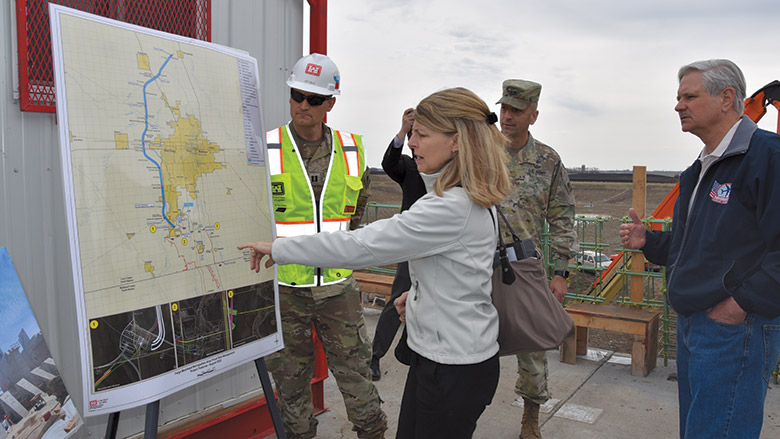
Related Article:
Taming the Red River: Innovative P3 Delivers Massive Diversion Project in North Dakota
Back to:
25 Top Newsmakers
North Dakotan Terry Williams is helping to manage the $3.2-billion Fargo-Moorhead Flood Diversion project, a first-of-its-kind endeavor, from the delivery method—it’s the first alternative delivery project for the U.S. Army Corps of Engineers, and the first P3 water management project in North America—to its split delivery implementation across the cities and counties that straddle the Red River, along the North Dakota and Minnesota border. While Williams calls the role a privilege and a once-in-a-lifetime opportunity, colleagues say the job was practically scripted for her because she is one of only a few people who could manage such a multifaceted effort. “Not many projects move as fast as this one, and Terry has the right balance to get it done,” says Cass County Engineer Jason Benson, who has worked on the Fargo-Moorhead (FM) Diversion project with Williams since 2011.
Born on the University of North Dakota campus in Grand Forks, Williams grew up in Fargo and Devil’s Lake, N.D., and spent summers working for her father’s engineering firm. In 1986 she graduated from the UND civil engineering school and immediately joined the Corps.
“Her upbringing and demeanor make her perfectly suited for this role,” Benson says. “That North Dakota connection not only influenced her career choice, but also has helped her cross [literal and figurative] boundaries to create collaborations on both sides of the Red River.”
The experience of battling spring floods shaped Williams’ childhood, and she quickly fell in love with the flood control mission of the Corps, she says, because it enabled her to directly affect people’s lives. Her work has ranged from designing environmental restoration projects and lock and dam rehabs on the Mississippi River to flood control projects in her home state, where she witnessed the impact of flooding on communities that have “suffered horribly,” she says.
“All too often, we’re helping people after the communities suffer major damage—that’s when funding pours in—but that’s after the damage has been done,” she contends. “I was keenly aware of the damage that would continue to happen in the [FM] community, and to be able to change that for the future of hundreds of people is a very rare opportunity for a civil engineer and is very rewarding.”
Catastrophic flooding in 2009 cost the FM metro area millions of dollars in just six weeks. In 2010, Williams was assigned to a feasibility study launched by the Corps to explore permanent countermeasures, and the project, which broke ground in 2017, has become the culmination of her career. When complete in 2027, it will shield 70 sq miles and nearly 260,000 people from flooding.
“The Corps is looking for ways to improve our infrastructure and flood management programs, and what alternate things can be done to speed our work and reduce costs,” Williams says. The pilot program is providing construction savings of $330 million, shortening construction time by 10 years and transforming civil works project delivery. Best practices from the FM project are already being applied to other federal projects, too.
“Terry is the leader that team needs,” says Aaron Snyder, water infrastructure financing program director for the Corps. “She supports them exceptionally well and takes that same approach with the project’s public and private sponsors—she inherently cares about everybody, makes them feel heard. This is key to a megaproject, to get through the information and many voices and deliver. She really wants the people of North Dakota to have this project; she is very humble, but she is the glue that holds everything together.”
All ENR 2023 Top 25 Newsmakers will be honored at the Award of Excellence Gala on April 11 in New York City.






Post a comment to this article
Report Abusive Comment